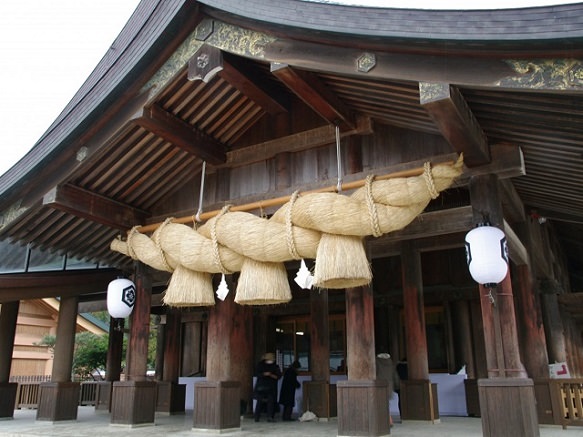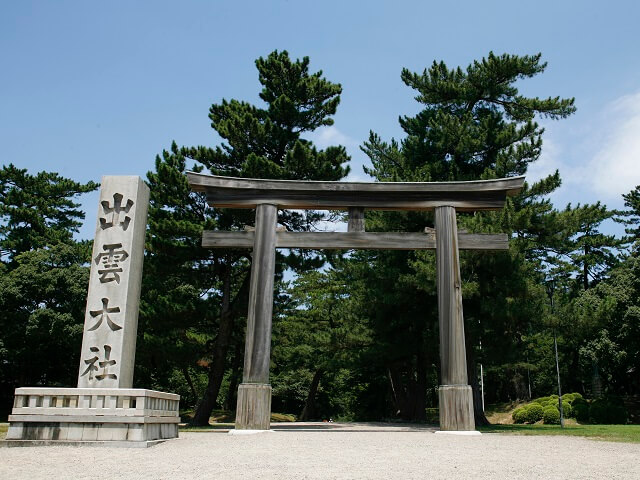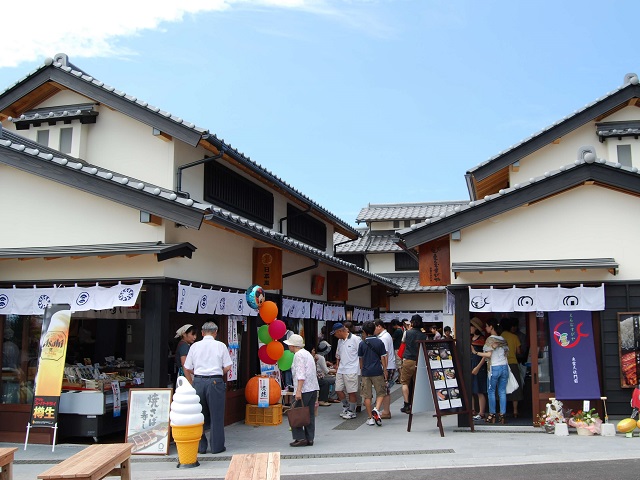-
- USA/Canada 1-800-285-2726
- Australia (02) 8006 4411

Izumo Taisha, also known as Izumo Grand Shrine, is one of Japan's oldest and most important shrines. Izumo Taisha is said to have enshrined Okuninushi no Okami, the creator of Japan. Okuninushi no Okami is also known as the god of marriage and good relationships. Therefore, many couples and partners visiting Izumo Taisha clap their hands four times rather than the ordinary two. Twice for themselves and twice for their partners, or partner they wish to be with. Izumo Taisha also enshrines Kotoamatsukami, the distinguished heavenly kami. Holding two kami, the shrine is home to multiple Japanese festivals (matsuri) and is a popular pilgrimage destination. Before gaining poularity as Izumo Taisha, the shrine was also known as Okami-no-miya in Izumo, Itsukashinokami-no-miya, Kizuki-no-Oyashiro, Kizuki-no-miya, or Iwakumanoso-no-miya. The shrine boasts numerous buildings (including the Shrine Hall and attached buildings) listed as Important Cultural Properties of Japan, and the shrine is believed by many to be the oldest Shinto shrine in Japan.

Although the exact year of construction is unclear, there is evidence that the shrine was present since the early 700's according to historic artifacts. While the early history of the shrine is still unclear, it was believed the shrine was once the highest building at 48 meters, just beating out Todaiji Temple in Nara (home of the Giant Buddha; 45 meters). Given the respect and veneration the Japanese people held towards the gods, it was believed they built the shrines high in the air as a palace for the gods. While some were skeptical of these claims, the discovery in 2000 of the remains of the shrine's former enormous pillars lent some credibility to these claims. Thanks to the discovery of the pillar remains, guests can see a model replica before entering the shrine grounds thanks to the efforts of some of the local college students. Although the shrine does not have the same size as when first built, the shrine is home to the largest shimenawa (sacred straw rope) in Japan at 13.5 meters long and a weight around 5 tons. The shimenawa continues to be one of the most recognizable structures at the shrine.

Close to the shrine is the Shinmon Dori preserved shopping street. This beautiful street offers incredible souvenir options in a diverse, traditional Japanese setting. Like the preserved streets of Ninenzaka or Sannenzaka in Kyoto, Shinmon Dori is a popular area to dress up in traditional Japanese clothing and enjoy a day along the street. Grab souvenirs for friends back home and stop along a one of the many shops serving delicious Japanese cuisine. If you're in Shimane, soba noodles and okonomiyaki are highly recommended.
Looking for the perfect blend of traditional culture, lively sights, and amazing food? Ask your travel agent about Japan Deluxe Tour's affordable line of custom private tours to explore Shimane at your leisure with your own personal tour guide. Relax and let us take care of the planning and enjoy an unforgettable vacation in Japan.
Each area has its own shrine and the god is called Ujigami-sama
Matsue Castle, Former Samurai District
Small castle town which prides itself on traditional arts and crafts
True traditional Japanese garden with a great collection of artwork
Tokyo shrine that sells special good luck charms for blessing your electronic devices.
Stunning arrangement of thousands of red torii gates
Famous floating torii gate on Miyajima
A Shinto shrine which was dedicated to Emperor Meiji and his wife in 1920